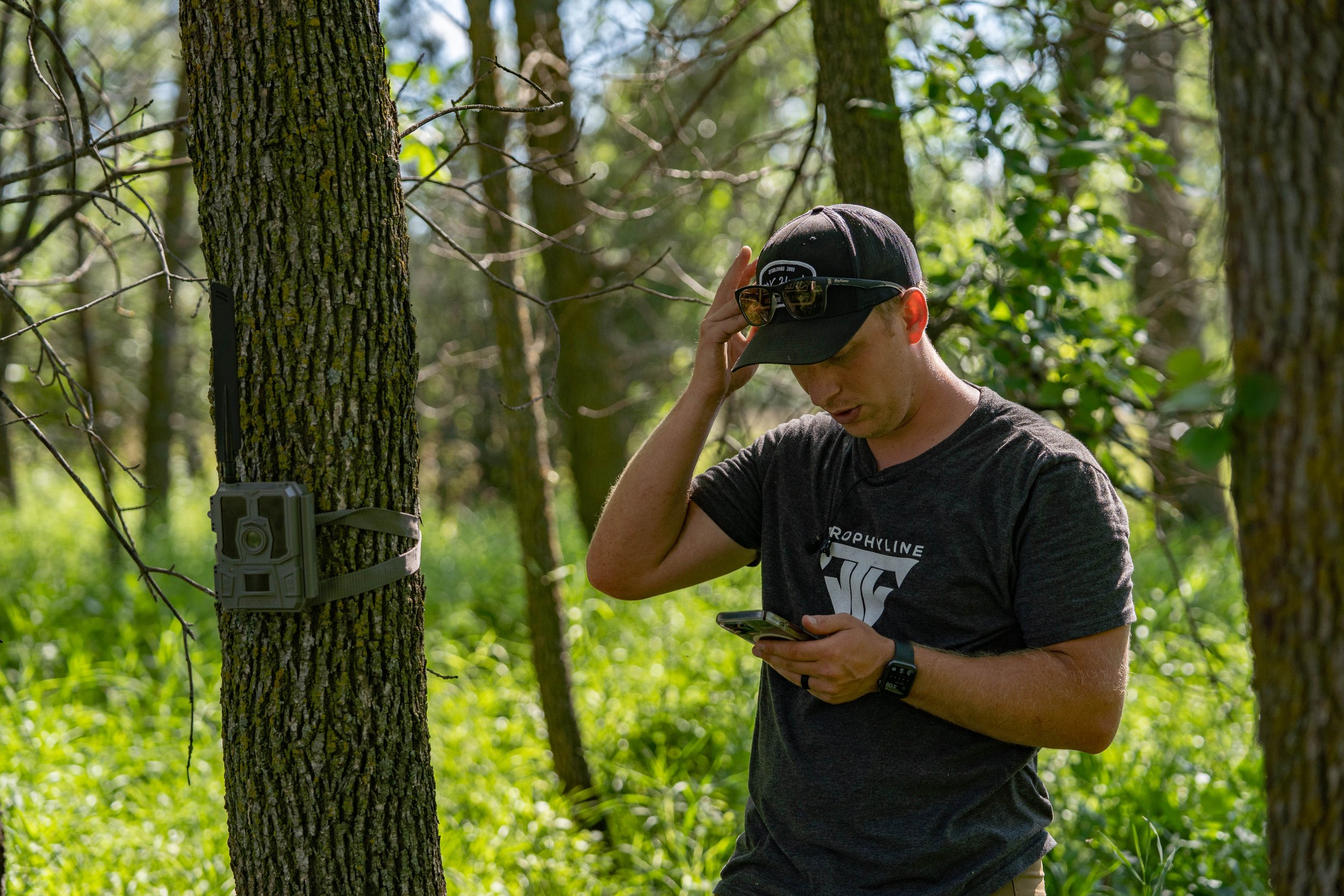By Kaleb Comstock
Running trail cams is such an exciting thing for me. The anticipation of a new giant showing up on a trail camera never goes away. Trail cameras can make your hopes as high as the sky and can also leave you feeling pretty much hopeless for shooting a mature deer depending on what your camera is catching. Late September and early October, in my opinion, is one of the most frustrating times to run trail cameras and my cameras slow down significantly. I think this happens for a few reasons, one being deer have now shed their velvet and are moving into their fall ranges. Over the years, I have learned some things that have helped me get more pictures during this time period.
Mock Scrapes
I always try switching my cameras to mock scrapes by the beginning of September. If my mock scrape isn’t being used actively, then as more scrapes appear I will move my camera over the scrapes that deer are actively hitting. This is a great way to gain inventory over what bucks have moved into their fall ranges in the area that you are hunting. When I run my mock scrapes, I like to hang a vine or a rope. I have found great success with all deer hitting the rope and the vines. Recently, I placed a vine in an area at 6:00 and by 8:00 that night, I had a buck hitting the vine. Pretty much any deer that is walking by that camera, is hitting the licking branch I created for them (the vine). Deer will hit mock scrapes/licking branches year round. I like to hang my licking branches (vines) right off a deer trail and I hang them low so deer can easily see the vine and leave their own scent on them as they walk past.
Food
I feel like this one is a pretty obvious answer, however the source of food may change throughout the year. Early on in the year, a green bean field is a great place to place a trail camera, but as the crops dry out, deer typically won’t hit them as hard. A major food source on one of my properties I hunt is acorns. Deer love to eat acorns in late September and into early October. This is a great place to place a trail camera and hunt during that time frame. If you can find their main source of food, chances are very high you are going to have an active trail camera with a healthy amount of deer pictures. A lot of times, I will put a mock scrape right in the middle of a big oak flat. This has been a great way for me to get pictures of bucks during this time frame.
Pinch Points
Pinch points are a great place to place cameras year round to get deer in front of your trail cameras. A pinch point can be man made, or it could be just how the land naturally pinches down. One pinch point on my property is between a big ravine and a steep ridge. It comes to a gradual slope where deer are constantly crossing which makes for a great spot to place a trail camera as well as stand location. Along the lines of a pinch point is a fence gap. Deer naturally like to take the least restrictive route so once they find a fence gap, most deer are going to use that gap. This is how you can create a man made pinch point.
Food sources and pinch points are great spots for trail cameras early in the fall.
Conclusion
All in all, I have a love/hate relationship with trail cameras during this late September/early October time period. Hopefully these three tips will help you this year during this time period when it comes to getting more pictures of deer and collecting inventory on what deer have transitioned to their fall ranges on the property you hunt.

































